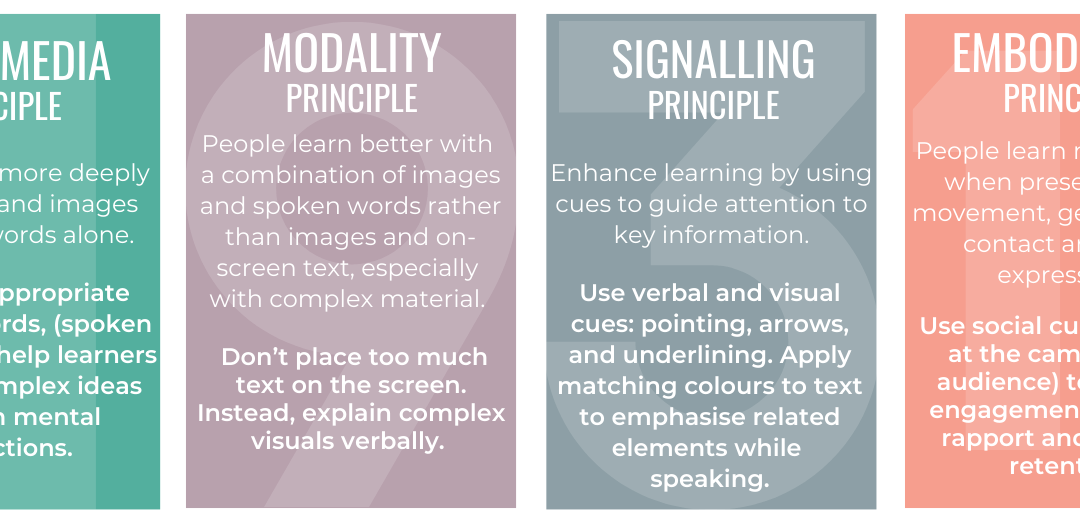
Mayer’s Principles Meets the Lightboard Creating Ultimate Learning
The Synergy between Mayer’s Multimedia Principles and the Lightboard: The Ultimate Online Multimedia Presentation System
The Lightboard transforms online education by delivering content in an engaging and dynamic way. By integrating Mayer’s Principles of Multimedia Learning, the Lightboard empowers Learning Designers and Presenters to create the ultimate learning experience.
Mayer’s Principles serve as a blueprint for how to structure multimedia elements to maximise learning outcomes. By focusing on reducing cognitive overload and fostering meaningful learning, these principles align seamlessly with the visual and interactive nature of Lightboard presentations.
Designing practical e-learning experiences requires more than just compelling content; it demands a strategic approach to delivering that content. Mayer’s Cognitive Theory of Multimedia Learning is one of the most trusted frameworks in this area, thus becoming the cornerstone for instructional designers, learning designers and e-learning professionals worldwide. Initially introduced in 2001, Mayer and Fiorelli have continued their cutting-edge research to publish 48 principles, in what is recognised as the field’s major reference work to guide creative teaching methods in classrooms and online training: The Cambridge Handbook of Multimedia Learning.
Now enter the Lightboard: a tool that transforms online education by creating a visually engaging, interactive experience. When Mayer’s Principles meet the Lightboard the result is a powerful synergy that optimises learning outcomes. In essence, both emphasise reducing cognitive overload while promoting meaningful, learner-centered engagement, making this pairing a perfect match for modern education.
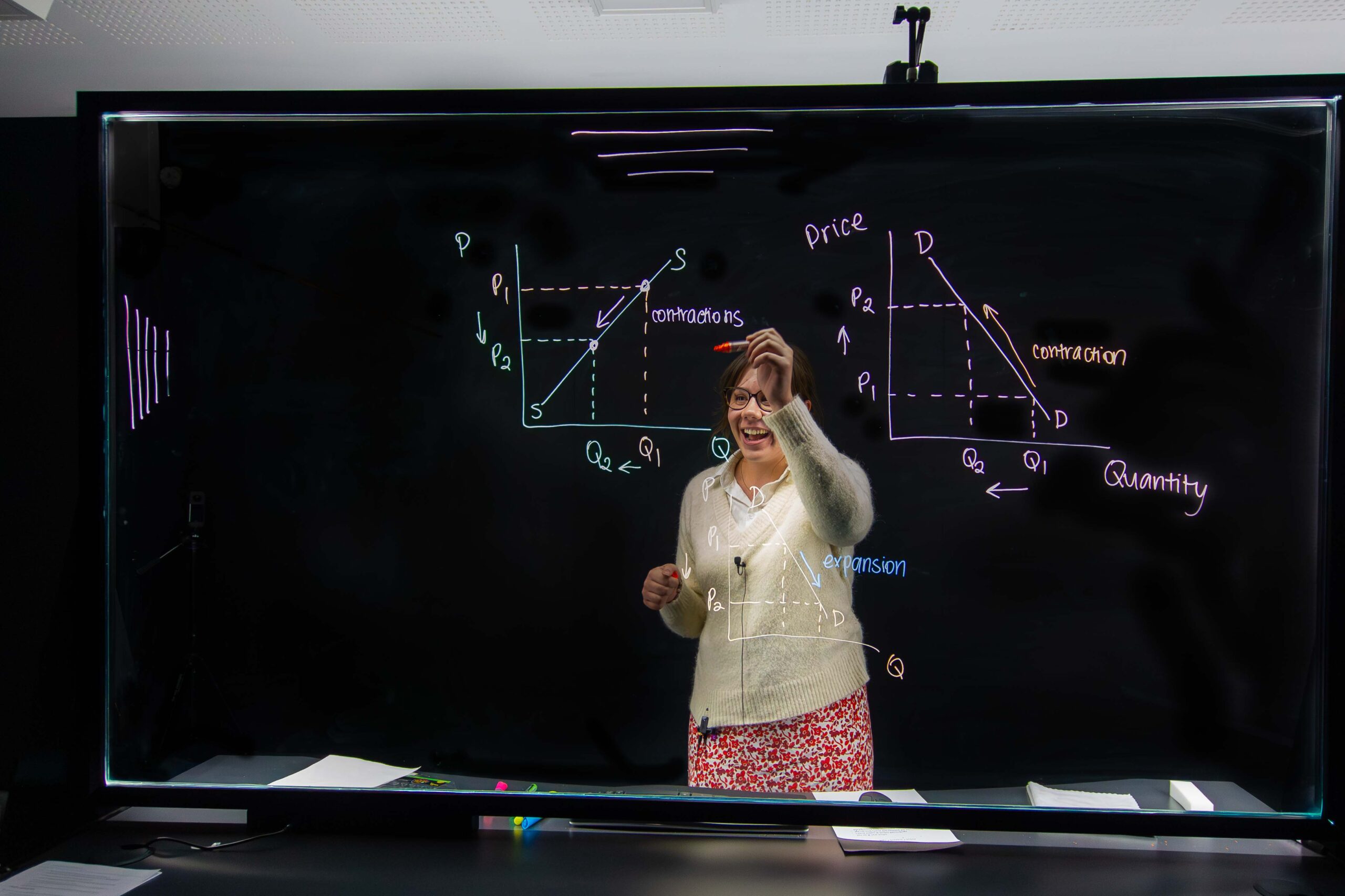

The lightboard makes it possible to apply almost all of the principles of multimedia learning established by R.E. Mayer, in particular signalling, modality and simultaneous presentation – which can be achieved very easily and intuitively.
Sandra Hildebrand, Research Assistant, Cybersecurity Learning Lab, Ostbayerische Technische Hochschule (Germany).
Applying Mayer’s Principles of Multimedia Learning to Lightboard Presentations
Applying 12 of Mayer’s Principles of Multimedia Learning to Lightboard presentions can enhance clarity, engagement, and retention. Here’s how each principle can be integrated:
1. MULTIMEDIA PRINCIPLE
People learn better from words (printed or spoken) and pictures (illustrations, photos, animation, video) than from words alone. Lightboard presentations embody this by allowing instructors to talk through concepts while creating accompanying diagrams, text, overlays or illustrations.
2. COHERENCE PRINCIPLE
Eliminating unnecessary content is cruicial for reducing cognitive overload. Using the Lightboard working area ensures that instructors can keep visuals clean and focused, presenting only what’s essential thereby preventing students from being overwhelmed by excess information.
3. SIGNALLING PRINCIPLE
Because the Lightboard is easy to draw on, it enables instructors to emphasise key concepts by writing them on the board and/or pointing to, circling or underlining them in real time. These visual cues guide learner’s attention to critical points, helping them process and retain important information.
4. REDUNDANCY PRINCIPLE
Mayer’s Redundancy Principle emphasises minimising unnecessary duplication of information, which can overload learners. The Lightboard aligns with this by allowing instructors to use visuals and concise annotations to complement spoken explanations. This reduces cognitive overload by providing clear, supplementary information without redundant text to enhance understanding.
5. SPATIAL CONTIGUITY PRINCIPLE
Placing related images and text close together fosters better understanding. The Lightboard enables presenters to explain and diagram concepts simultaneously, ensuring that visuals and explanations are aligned spatially and temporally.
6. TEMPORAL CONTIGUITY PRINCIPLE
The nature of the Lightboard ensures that spoken words and corresponding visuals appear at the same time, helping learners to connect verbal explanations with the images or diagrams being drawn.
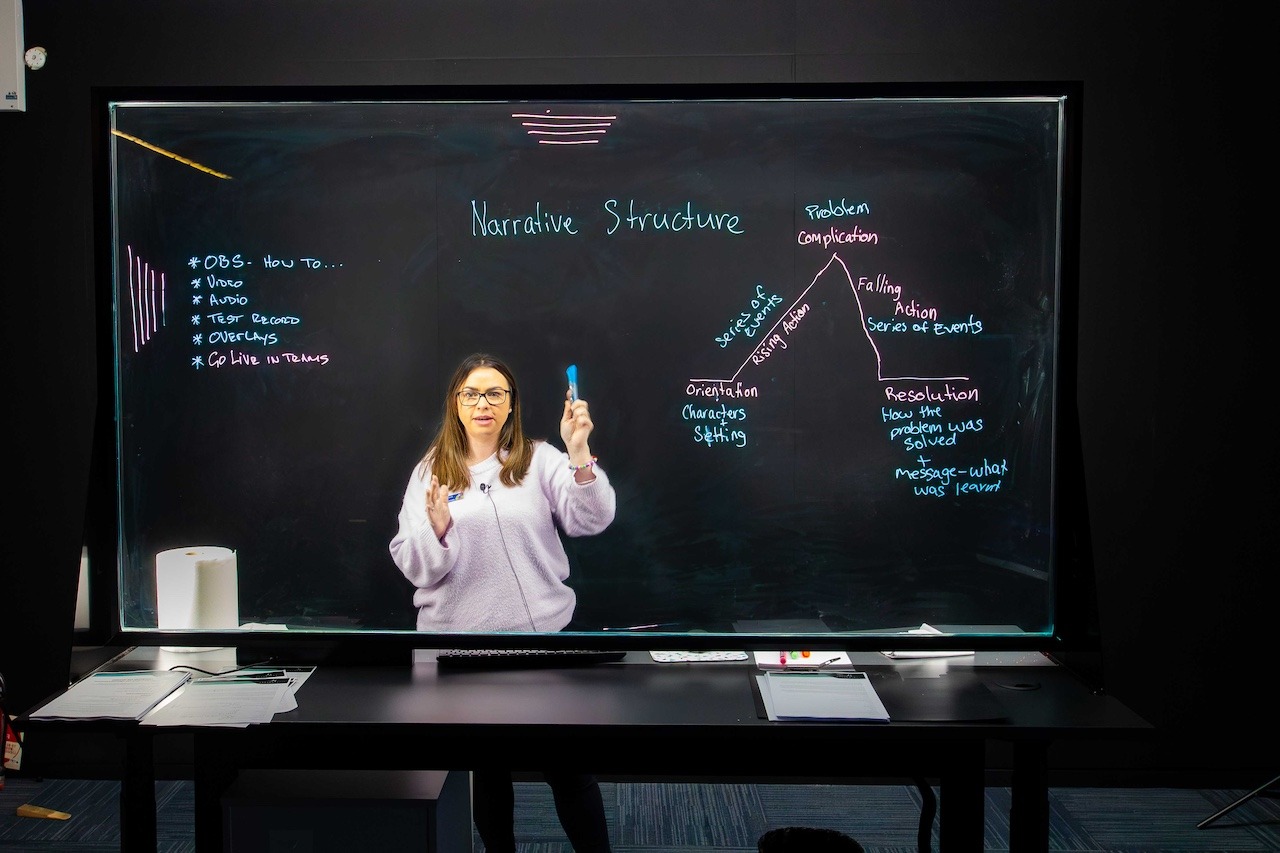
7. SEGMENTING PRINCIPLE
Breaking down lessons into manageable chunks enhances learning. Lightboard presenters can easily segment content by pausing to emphasise points or by creating a series of short videos to introduce new sections, aligning with how learners process information.
8. PRE-TRAINING PRINCIPLE
Introducing key terms and concepts before diving into a complex topic prepares learners for deeper understanding. Lightboard instructors can offer brief explanations of foundational ideas visually before expanding on more advanced content.
9. MODALITY PRINCIPLE
Combining spoken words with visuals rather than written text alone boosts comprehension. The Lightboard allows for real-time drawing and verbal explanations, keeping learners visually and auditorily engaged.
10. PERSONALISATION PRINCIPLE
Using a conventional style helps students connect with the material. Using a Lightboard allows presenters to maintain eye contact and engage learners in a more personal, direct manner, making the content feel approachable and real.
11. EMBODIMENT PRINCIPLE
People learn more effectively when on-screen presenters use natural gestures, movement, eye contact, and facial expressions rather than not. The Lightboard enhances a natural learning experience because the presenter faces the audience, keeping eye contact and making expressions and movements fully visible, creating a more engaging and human connection
12. WORKED EXAMPLE PRINCIPLE
Learners gain deep understanding when they receive worked examples as they are learning a new concept. The Lightboard is an ideal tool for incorporating this Principle as it allows instructors to visually demonstrate processes or problems through practical demonstration, while maintaining direct interaction with the audience.
The Mutual Goal of Mayer’s Principles and the Lightboard
The synergy between Mayer’s Principles and the Lightboard lies in their mutual goal of making learning clear, engaging and effective. By combining real-time interaction with multimedia strategies, the Lightboard creates an immersive learning environment where Mayer’s Principles can easily be applied to foster not only higher engagement but a deeper understanding and retention.
Keep your learning design on track by downloading our Guide to Reducing Cognitive Overload.
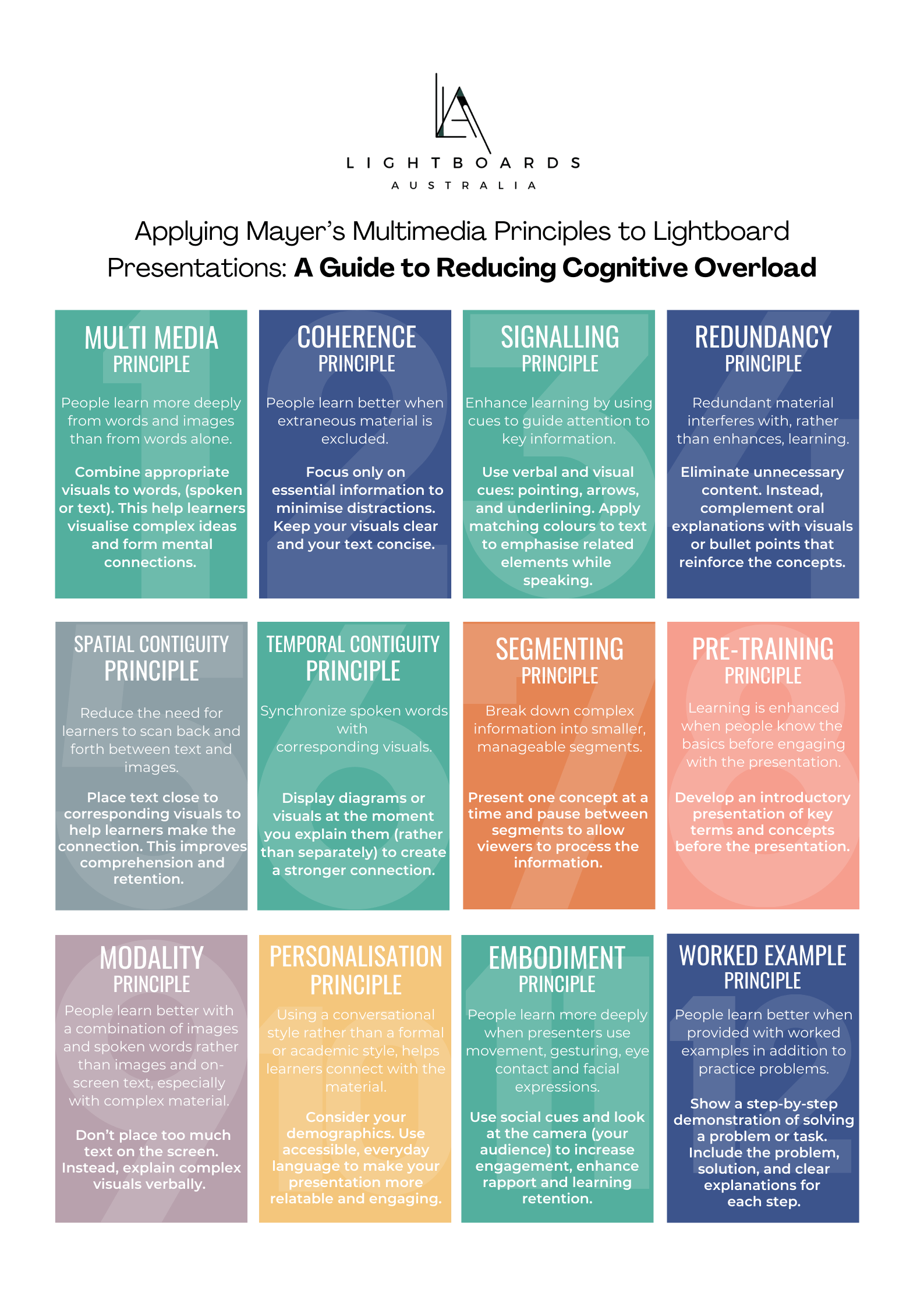
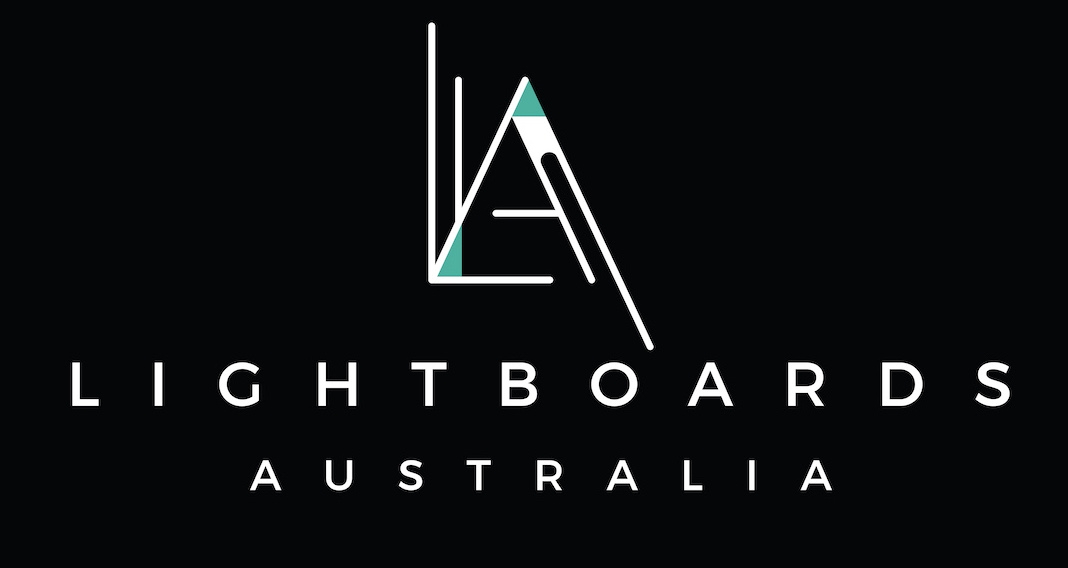
Recent Comments